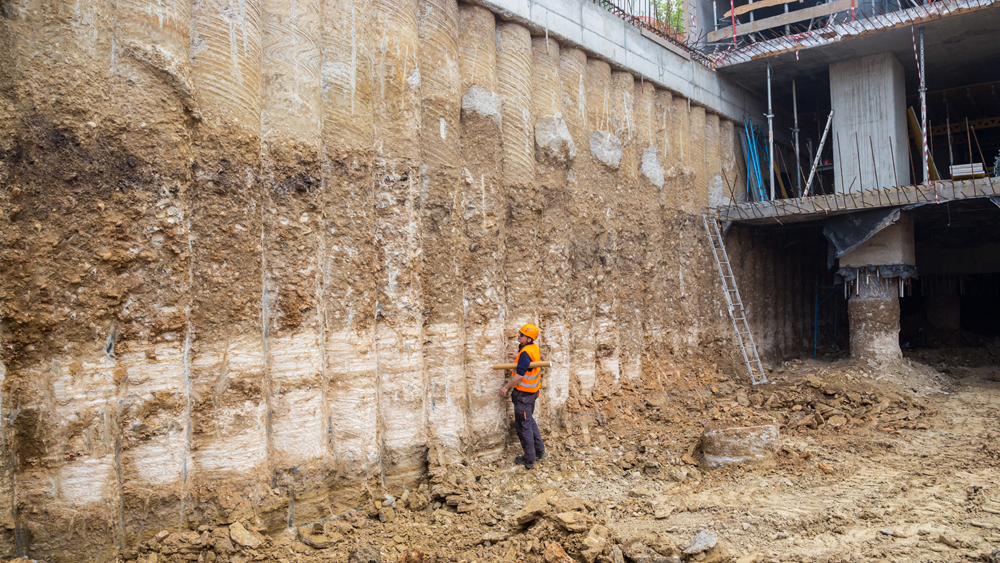Project Geotechnical Engineer Knowledge for Large-Scale Advancement
Wiki Article
A Detailed Exam of the Solutions Given by Consulting Engineers in the Area of Geotechnical Engineering: From Website Investigation to Job Implementation
Consulting engineers in geotechnical engineering play an essential duty in the effective implementation of construction projects, beginning with extensive site investigations that expose important subsurface problems. Their experience extends to dirt home evaluations, ecological effect analyses, and the mindful surveillance of job implementation, making certain alignment with safety and sustainability standards.Importance of Geotechnical Design
Geotechnical design is an essential technique that underpins the safety and security and sustainability of civil framework jobs. By comprehending the mechanical habits of soil and rock products, geotechnical designers examine the suitability of sites for various constructions, including structures, bridges, and dams. This basic evaluation guarantees that structures can hold up against ecological aspects and loads without experiencing failure.The relevance of geotechnical engineering extends past simple structural safety and security; it additionally includes environmental stewardship. Correct geotechnical evaluations contribute to decreasing the environmental impact of building and construction. With careful analysis of soil residential or commercial properties and groundwater problems, engineers can design structures and retaining frameworks that reduce threats such as erosion and landslides, advertising long-lasting security.
Furthermore, geotechnical design plays a crucial role in job price administration. geotechnical works. By recognizing prospective concerns early in the style stage, engineers can suggest appropriate options, thus preventing pricey delays and redesigns throughout construction. This aggressive strategy not only improves task efficiency however also significantly decreases threats associated with unanticipated website conditions
Site Examination Techniques
Efficient site examination techniques are vital for collecting accurate data regarding subsurface problems before construction. These techniques assist in the understanding of the geological and hydrological setting, which is critical for making sure the security and safety of proposed structures.Typical approaches used in website examinations consist of borehole drilling, which allows engineers to extract soil samples at different depths, supplying understandings right into stratification and product kinds. Additionally, geophysical studies, such as seismic refraction and electric resistivity, offer non-invasive means to examine subsurface attributes over larger areas. These approaches can help determine anomalies without considerable excavation.
Examination pits are an additional beneficial strategy, giving straight monitoring of dirt layers and allowing in-situ testing. geotechnical works. This method is particularly helpful for shallow excavations and can aid analyze groundwater degrees. Cone penetration tests (CPT) are significantly made use of, as they offer continuous accounts of dirt resistance, which helps in determining dirt stamina and layering.
Each of these techniques plays a vital duty in establishing an extensive understanding of website problems, enabling consulting designers to make educated decisions and referrals throughout the job lifecycle. Exact information collection during the website investigation stage is critical to mitigating risks and making sure effective project execution.
Soil Residential Or Commercial Property Assessment

The evaluation procedure typically involves a combination look at these guys of research laboratory examinations and area investigations. Key residential properties such as shear toughness, compressibility, leaks in the structure, and moisture content are assessed to figure out the dirt's viability for building and construction objectives. Basic tests, including the Atterberg limitations, Proctor compaction, and triaxial shear tests, are typically utilized to gather data on soil habits.
Along with these tests, in-situ techniques such as the Requirement Penetration Test (SPT) and Cone Penetration Test (CPT) offer valuable insights right into dirt stratigraphy and thickness. The outcomes of these evaluations notify designers about prospective difficulties, such as soil liquefaction or negotiation, enabling them to devise proper mitigation strategies.
Environmental Influence Assessment
Environmental impact evaluation plays an essential role in the planning and implementation of design jobs, particularly in geotechnical engineering. This procedure includes evaluating the potential ecological effects of proposed projects on dirt, water, air high quality, and surrounding ecosystems. Consulting designers use various methodologies, consisting of site assessments, modeling, and area research studies, to identify and evaluate these effects.The evaluation commonly starts with the identification of standard environmental problems, which serves as a referral for anticipating potential adjustments. Engineers assess aspects such as erosion, groundwater contamination, and environment disruption, making sure that all relevant ecological regulations and standards are complied with throughout the job lifecycle. Stakeholder engagement is likewise an integral component of the evaluation process, as it cultivates communication in between project designers, neighborhood communities, and governing bodies.
Furthermore, reduction approaches are established to resolve identified effects, permitting engineers to suggest choices or adjustments to predict designs that improve sustainability. This aggressive approach not only reduces adverse impacts on the setting yet also promotes public depend on and conformity with ecological legislation. Eventually, efficient ecological influence evaluation strengthens the general stability and stability of geotechnical design projects, supporting responsible advancement methods.
Task Execution and Surveillance

Monitoring is a crucial component of job application. Engineers utilize various strategies, such as instrumentation and area tests, to assess soil actions and architectural actions in real-time. This continuous tracking enables the recognition of any variances from expected efficiency, permitting timely treatments to reduce threats.
Additionally, getting in touch with engineers preserve open interaction with professionals and stakeholders throughout the procedure. Regular site examinations and progress reports make certain that all parties are notified concerning project condition and any type of arising concerns. By promoting cooperation and openness, speaking with designers promote a more efficient application procedure, try this therefore enhancing project outcomes.
Eventually, efficient task execution and monitoring not only support security and high quality criteria yet also add to the overall success of geotechnical jobs, ensuring they satisfy their designated functions sustainably and sensibly.

Final Thought
Finally, the role of consulting engineers in geotechnical design includes an important sequence of services that ensure task success. From thorough website investigations to comprehensive soil building analyses and environmental impact evaluations, these specialists lay the groundwork for safe and lasting building practices. Continual tracking throughout project execution better assures structural integrity and stakeholder interaction. Eventually, the complex payments of consulting designers are vital in addressing the intricacies of geotechnical challenges in modern-day engineering tasks.Report this wiki page